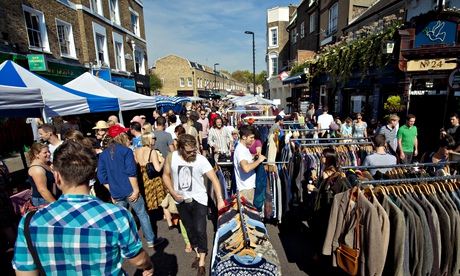
Will Self sent the internet into tailspin on Tuesday with his takedown of “talentless hipsters”, more neatly referred to as “the dickheads”. All he can do, he says, is sit there and reflect on the “great world-girdling mass of mindless attitudinising that passes for ‘hip’ in the third millennium since the death of the great sandal-wearing hippie”.
Self is not alone in his disdain. If you are young, doing something vaguely creative and own a few questionable items of clothing, chances are that someone, somewhere, will have thought: “twat”. The ire invariably comes from those who are older, who have seen it all before, whose definition and understanding of “cool” is from a time where things were – well, just better. We, the young and creative of now, are mindless. We’re sheep. We just want to follow.
A blanket disdain for anything hipster-tinged is not just mean-spirited, it’s becoming tired.
Someone in an office I worked in once said to me, “Oh you would say that, you bloody hipster,” in relation to liking a particular kind of bread, if I remember correctly. Any response would have only been taken as more supporting evidence. There’s nothing you can come back with to people like Self, save, “All right, dad, keep your cardigan on,” but then who’d look like the idiot? Me. The gobshite-y, the clueless, low-neck T-shirt-wearing millennial dickhead who “wanders bemusedly around the world”.
“At some point in the last few years”, argued Morwenna Ferrier in her astute analysis of the term in the Observer, “the hipster changed. Or at least its definition did.” It was once the term applied to anyone doing counter-cultural, zeitgeist-y and creative things in New York and London, but has evolved into a label for people who, as the Observer piece says, “look, live and act a certain way”. To call someone a “hipster” has become an insult, a playground jeer.
But a penchant for facial hair, low-neck T-shirts, sourdough and craft beer is not a prerequisite for being a terrible person.
How have we arrived at the point where a person is written off based on what they wear and what they eat? Maybe it’s always been this way. Haven’t annoying, young, creative people, as my dad pointed out yesterday after reading Self’s piece, been around forever?
Every generation has had tribes who thought they were being highly original in their sartorial and creative preferences. They just grew – or grow – up and roll their eyes at the next lot, much in the same way that year-eight students everywhere will have eyeballed the new year sevens in their baggy uniforms earlier this month. It’s a we-were-here-first-ness that feels good.
As author Helen Hegemann says, “There’s no such thing as originality. Only authenticity.” It’s not as though the owner of Farmer’s Daughter, the LA motel with the old agricultural equipment and swaths of gingham hanging from the walls that Self writes about, thinks they’re Michelangelo. And yes, the “artfully distressed” or “industrial” interiors of 99.9% of new restaurants and bars these days is becoming a bit tiresome. If the food is nice, who cares? You’re there to eat or drink with your friends. Not stare at light fixtures.

